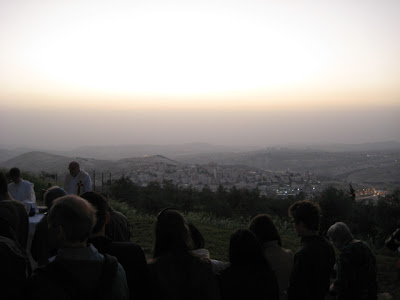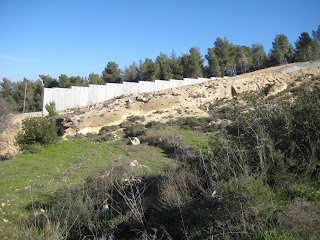Having lived in Jerusalem and currently living in the Bethlehem area, means that a lot of what I have learned and know about the Palestinian/Israeli conflict is very West Bank and Jerusalem centered. I know little about what is going on in Gaza, except for what I hear from the news and only snippets from the situation of Palestinians in Israel. I easily fall into the mindset that because Palestinians in Israel have citizenship and freedom of movement, their situation must be easier. Two issues have recently come to my attention that have checked this mindset and reminded me that the Palestinian/Israeli conflict is multi-dimensional. Although the situations in Gaza, Jerusalem, the West Bank, and inside Israel are all different, they are all part of the varying dynamics of this conflict.
Bedouins in Israel and Israel's "unrecognized" villages
Last year, the Prime Minister of Israel's office as been promoting a plan to relocate about 30,000 Bedouin to recognized Bedouin villages in the Negev in Southern Israel. Haaretz recently reported that about 190,000 Bedouin live in the Negev Desert: 120,000 of these in recognized villages and 71,000 in localities not recognized by the state of Israel. This plan is said to help those Bedouin who live in unrecognized communities, which are thus not provided with any infrastructure by Israel, a fact which has led to an increase in environmental problems in these areas.
 |
| Photo c/o haaretz.com |
Last week, a UN committee called upon the Prime Minister to revoke this plan. Instead of recognizing Bedouin localities wherever possible, the plan calls for land exchanges, compensations, and payments, which could cost up to 6.8 Billion shekels (about 1.8 Billion dollars).
Haaretz mentioned that the report " expressed concern ' about the current situation of Bedouin communities, particularly with regard to the policy of demolitions, notably of homes and other structures, and the increasing difficulties faced by members of these communities in gaining access on a basis of equality with Jewish inhabitants to land, housing, education, employment and public health."
In a recent conversation with a friend, she was describing her experience traveling to some Bedouin communities in the Negev. She likened the situation in the Negev to the situation in the West Bank. The West Bank is currently divided into areas A, B, and C. Area A is under complete Palestinian civil and military control, Area B is Palestinian civil, but Israeli military control, and Area C is under complete Israeli control. In the Negev, there are recognized Bedouin villages, (similar to Area A), unrecognized villages where Bedouin live (similar to Area B), and even Jewish only cities (similar to settlements in Area C). These detailed laws which are legalizing racism in Israel, are new details for me and something that I would like to travel for myself and see in the future.
The Citizenship and Entry into Israel Law
 |
| Photo c/o haaretz.com |
Another issue that has come into the news lately, which has embellished what I know about Palestinians in Israel is the recent passing of the Citizenship and Entry into Israel Law. This law prohibits Palestinians who marry Israeli citizens from obtaining Israeli citizenship. At times these spouses even have a hard time gaining residency permits. They are not allowed to drive within Israel, work within Israel, or receive health care. I won't say much about this issue, but guide you to a recent movie on this subject, about one man who is fighting against this law, so that all humans can be free to love and marry whom they want.
Separation Diary
Articles about the Bedouin Relocation plan:
HERE and
HERE.
Another article about the Citizenship and Entry into Israel Law:
HERE.








































